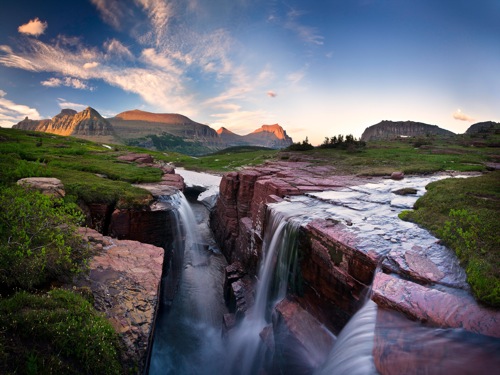
Glacier National Park, photo by Eric Reese
In Montana, “Big Sky Country” isn’t just a nickname or a tourism motto. Step off the plane, train or automobile in the state, and you’ll immediately understand: Wide expanses of land and the freshest of air make Montana an outdoors-lover’s dream.
Montana is known for its natural beauty, and any group that visits the state will want to spend a good deal of time admiring its splendor. The national parks and other natural areas around the state could keep active groups busy for days. But it’s not just about the outdoors. A wild Western heritage and innovative communities help make Montana an appealing destination for diverse groups of travelers.
For 2012, Montana’s tourism industry has continued to build on its already impressive resume. New hotels and amenities in Glacier National Park have expanded the options for group visits. Nearby, the Big Sky Resort has opened a new expedition tram to take visitors to the top of Lone Peak. In West Yellowstone, the Grizzly Wolf and Discovery Center has opened a new birds-of-prey exhibit.
Earlier this year, Big Hole National Battlefield finished renovating its visitors center. The ongoing reconstruction of Old Fort Benton hit a milestone with the completion of the historic Bourgeois Quarters.
Rebuilding History
The small community of Fort Benton, Montana, is named for a military outpost that was active from 1848 to 1881. It has the distinction of being the birthplace of the state’s government. After the fort closed, its facilities fell into disrepair; today, a rebuilding project is restoring the historic site to its former glory.
Historians plan to rebuild Fort Benton building by building and log by log, and reached a major milestone this year with the completion of the two-story Bourgeois Quarters, where soldiers lived during their service at the fort. Groups that visit can tour the quarters, as well as other previously restored buildings such as the reconstructed trade store, warehouse and blacksmith’s shop.
This year’s news at the fort also includes the completion of the new Starr Gallery, which showcases the historical and natural art of area artists. Visitors will find North American nature prints by Karl Bodmer and see bronze sculptures such as “No More Buffalo” by Bob Scriver.
A Battle Remembered
In August 1877, a battle erupted on the Montana frontier between federal soldiers and the Nez Perce Indians, leaving more than 100 people dead. Big Hole National Battlefield commemorates the place where the fighting occurred and helps educate visitors about the history of the Nez Perce in the West.
The park recently completed a major renovation of its visitors center, which created new educational exhibits. The displays tell the story of the nontreaty Nez Perce and the U.S. military in Montana and help shed light on the tragic event of the battle. The exhibits have artifacts from both Nez Perce and military members, including beadwork that visitors can touch.
Outside, the battlefield has two self-guided trails that visitors can follow. One takes guests to the creek and the Nez Perce Camp; the other goes to the hillside where the military forces were stationed.
Birds of Prey
Near the border of Yellowstone National Park, the Grizzly and Wolf Discovery Center in West Yellowstone, Montana, gives visitors an up-close look at some of the creatures that make their home in the park. Although the center is named for bears and wolves, a new development opened in May introduces the public to the area’s birds of prey.
Visitors will journey from the River Valley Wolf habitat to a new aviary and exhibit area where they’ll come face to face with hawks, owls and bald eagles. The aviary is constructed to simulate a cliff overlooking a pond and has three smaller exhibits where visitors can learn about other raptors that live at the center.
The captive birds on display at the center were rescued and rehabilitated and cannot be rereleased into the wild. Instead, they are used to help educate visitors about the area’s wildlife; interpreters give information on the ways in which bears and wolves interact with birds of prey, as well as how humans can help protect them.












